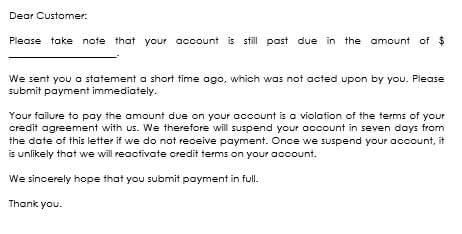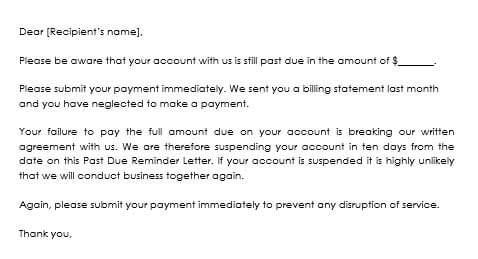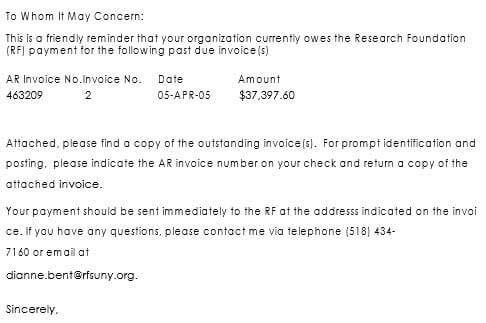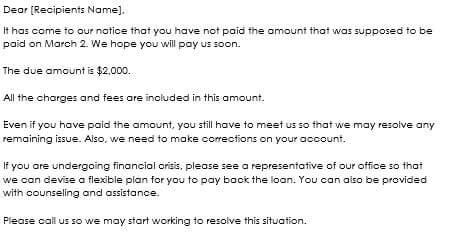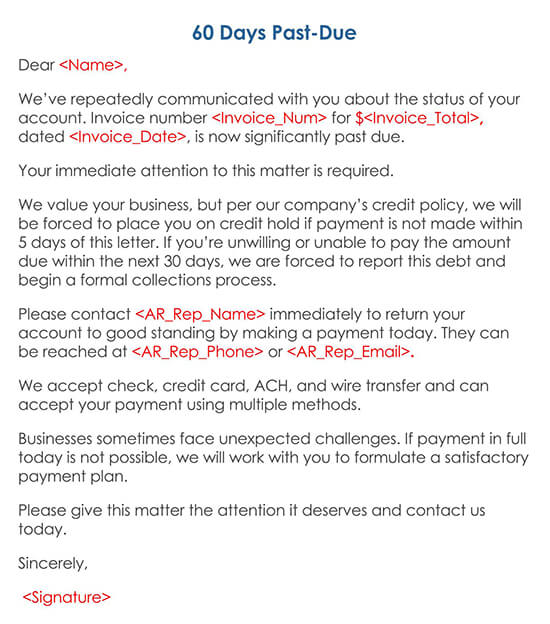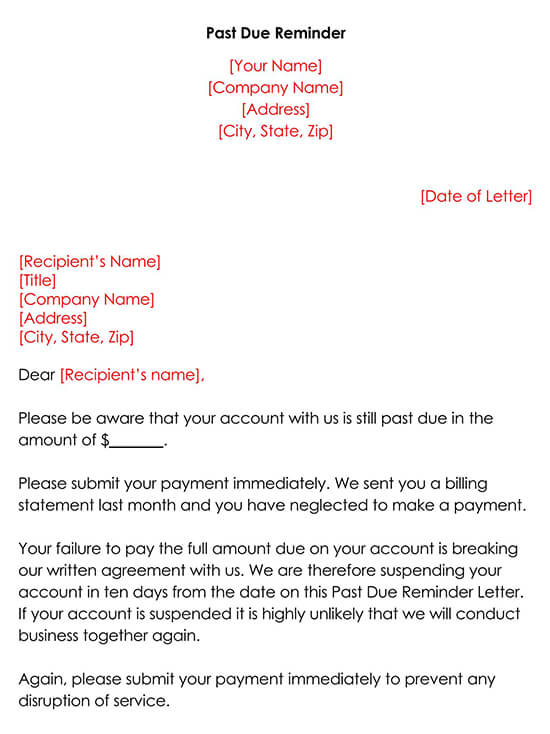As a businessman, you’ll interact with various types of customers. While some will adhere to the deadlines set by your invoice, others will default to pay in time. However, you shouldn’t get this get to your wits.
In this article, we will go through a detailed process of writing a past due letter like a pro.
Late payments are common occurrences in the world of business. One major problem with it is that it will always do your business to struggle. Therefore, most companies will always endeavor to collect their outstanding dues for goods or services rendered in a timely manner. So, how do you communicate with your clients to pay their debts?
A Past Due Letter is a document written to remind customers that they have a past due payment. Usually, the main aim of past due letters is to remind the clients to reduce the amount of outstanding debts. At the same time, it helps in reminding and pushing the clients to pay what they owe. In the letter, you can include what repercussions can follow if they do not pay up.
How to Write a Past Due Letter
There is no doubt, that writing a past due letter presents a challenge to many people. However, if you are thinking of writing one, the following steps will be useful to you:
Company details
At the top of your letter, you need to include your company’s name, address, and contact details.
Date of the letter
After the company details, you can leave some space then include the date of writing.
Recipient’s details
Here, you will mention the name, title, and address of the recipient. Probably, the recipient will be the client owing your company/business some debt.
Greeting
Just like any other official letter, your past due letter should equally use an official greeting.
Introduction paragraph
In the introductory paragraph, you can indicate the main purpose of writing the letter. Bring to the reader’s attention that their debt payment period has elapsed. Also, you can include the invoice number which they were to pay and the amount.
Body paragraphs
Here, you can describe the due amount in detail. Clearly state that the invoice repayment date is past due. Also, you can issue a warning and any repercussions that will take effect upon default. Lastly, you can provide payment details or methods.
Conclusion
Conclude your letter by reinstating the significance of promptly paying the debt. Further, thank the reader for taking their time to read through the letter. Add a closing clause, your signature, and your name.
Past Due Letter Sample (Text Version)
Kaitlin Vogel
ABC Company limited
General St, 01, NY, 00100
12th August 20XX
Maryanne Durbin
Narrow St, o1, NY, 00100
[email protected]
Dear Maryanne,
Kindly take note that your account with use is still past due in the amount of $4,000.
We sent you a statement a while ago, but you didn’t act upon it. Due to that, we would want to encourage you to pay the amount owed immediately.
Failure to pay for the amount due will be treated as a violation of our terms and conditions. In response, we may be forced to suspend your account and take the due legal action.
However, if you make payments immediately, we may reconsider your position with up. Also, we will be lenient enough to withdraw our lawsuit.
Best Regards,
Signature
Kaitlin Vogel
Managing Director of ABC Company Limited.
Free Past Due Letter Samples
Tips to Follow
Some tips to follow while writing the past due letter are:
1. Mention every detail
You should mention every detail relating to the invoice as well as the payment methods. These details may include:
- Invoice number
- Amount owed
- Payment terms
- Payment instructions and
- Contact information, among others.
2. Tailor the language according to the occasion
Usually, the language you use plays a major role in your relationship with your clients. According to experts, the language used varies depending on the period taken. For instance, if the amount is 15 days past due, it’s wise that you use polite and friendly language. Using a gentle and polite language will facilitate a positive relationship, which will, in turn, encourage them to pay.
If the amount owed is 60 days past the due date, then the language to use should be able to demonstrate urgency. Since the amount is overdue, don’t be shy to mention so.
However, things should take a different turn if the client stays up to 90 days without making payments. While it’s still important to maintain professionalism, you can remind the client that necessary legal actions may be taken if they don’t respond promptly. Among the actions likely to be taken is engaging a debt collection agency.
3. Late payments penalties
Also, you can mention in the past due letter that you intend to impose late payment penalties. Oftentimes, the penalty is charged at a specific percentage of the total amount owed. However, it’s important to note that once you’ve decided to impose a late payment penalty, it can sour your relationship with the client.
4. Automate the reminders
One of the best ways of sending past due letters is through automated reminders. You can, therefore, set a reminder to send your letters at a specific time interval.
5. Enlist help
At the end of your letter, you can notify the client that you are willing to seek legal help either from an attorney or collection agency to help settle the debt. Through this, they will see the urge to commit themselves towards settling the debt.
Summary
Writing an email past due letter is more or less the same as the text version. However, the difference occurs in the header. Instead of writing your name and address details, the email letters do lack this part. Instead, you will start your letter by including the subject line. Again, instead of a signature, you can simply include your initials for the electronic letters. Otherwise, the rest of the information should remain the same as the text versions.
